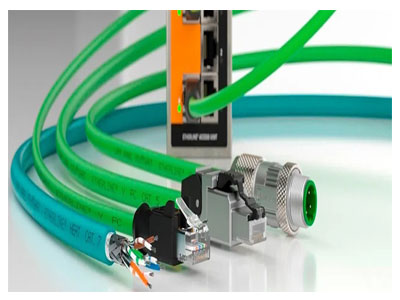Key Takeaway
Industrial Ethernet integrates seamlessly with SCADA systems to enable real-time monitoring and control in industrial processes. It connects devices like sensors, PLCs, and actuators to SCADA software, ensuring fast and reliable data transmission. This integration allows operators to monitor system performance, gather data, and control equipment efficiently.
Using Industrial Ethernet, SCADA systems benefit from high-speed communication and scalability. It supports multiple protocols, such as PROFINET and EtherCAT, making it flexible for various applications. The integration also enhances remote access, allowing operators to manage systems from anywhere. Additionally, Industrial Ethernet improves data accuracy and reduces downtime through predictive maintenance capabilities. This combination makes Industrial Ethernet and SCADA systems vital for modern industrial automation.
Overview of SCADA Systems in Industrial Automation
SCADA systems are vital for industrial automation, acting as the central nervous system of modern manufacturing and process industries. These systems monitor and control processes by collecting real-time data from field devices such as sensors, actuators, and controllers.
A typical SCADA system consists of three main components: Human-Machine Interfaces (HMIs) for visualization, Remote Terminal Units (RTUs) or Programmable Logic Controllers (PLCs) for data collection, and a centralized database for storing and analyzing data. SCADA enables operators to monitor performance, adjust parameters, and ensure processes run smoothly.
In industries like oil and gas, power generation, and water treatment, SCADA systems are critical for maintaining efficiency, safety, and compliance. Integrating these systems with Industrial Ethernet enhances their capabilities by enabling faster communication and more reliable data transfer between devices and control centers.

Benefits of Using Industrial EthernetWith SCADA for Real-Time Data
The integration of Industrial Ethernet with SCADA systems offers significant benefits, particularly in real-time data handling. Ethernet’s high-speed capabilities ensure that data from sensors and devices reaches SCADA systems instantly, enabling operators to make quick, informed decisions.
One major advantage is improved data accuracy. Industrial Ethernet minimizes latency and packet loss, ensuring that SCADA systems receive precise information. For example, in a chemical plant, real-time temperature and pressure data transmitted via Ethernet helps maintain consistent product quality.
Another benefit is scalability. Industrial Ethernet supports the integration of additional devices without major reconfigurations, making it easier to expand SCADA systems as industries grow. It also enables remote monitoring, allowing operators to access real-time data from anywhere, improving flexibility and responsiveness.
By combining Industrial Ethernet with SCADA, industries can achieve faster, more accurate, and scalable automation.
How Ethernet Enhances Communication Between SCADA and Field Devices
How Ethernet Enhances Communication Between SCADA and Field Devices
Security ConsiderationsWhen Integrating SCADA and Ethernet
Integrating SCADA systems with Industrial Ethernet introduces security challenges that must be addressed to ensure safe and reliable operation. As more devices connect to the network, the risk of cyberattacks increases, making robust security measures essential.
One critical consideration is data integrity. Ensuring that data transmitted between SCADA and field devices is accurate and unaltered is vital. Encryption and authentication protocols can protect data from unauthorized access or tampering.
Network segmentation is another effective strategy. By dividing the network into smaller segments, critical SCADA functions can be isolated from less secure areas, reducing the attack surface. Firewalls and intrusion detection systems add an extra layer of protection against potential threats.
Regular security audits and software updates are also crucial. These measures keep the network protected against evolving threats, ensuring a secure integration of SCADA and Industrial Ethernet.
Scaling SCADA SystemsWith Industrial Ethernet for Future Growth
Industrial Ethernet makes scaling SCADA systems for future growth straightforward and cost-effective. As industries expand and adopt more devices, Ethernet networks can easily accommodate the increased data flow and device connectivity.
One of the key advantages of Ethernet is its flexibility. Adding new sensors, actuators, or controllers to a SCADA system requires minimal reconfiguration. VLANs (Virtual LANs) can be used to segment traffic, ensuring efficient data flow even in large-scale networks.
Ethernet also supports advanced technologies like IoT and cloud-based analytics, which are essential for Industry 4.0 initiatives. For example, a water treatment facility can integrate IoT sensors to monitor water quality remotely and use cloud platforms for predictive analytics.
By adopting Industrial Ethernet, industries can future-proof their SCADA systems, ensuring scalability, adaptability, and high performance as demands evolve.
Conclusion
Industrial Ethernet enhances SCADA systems by enabling real-time data handling, seamless communication with field devices, and robust security measures. Its scalability and compatibility with advanced technologies ensure that SCADA systems can grow and adapt to meet future industrial needs.
By integrating Industrial Ethernet with SCADA, industries can optimize performance, improve efficiency, and maintain a competitive edge in an increasingly connected world.
